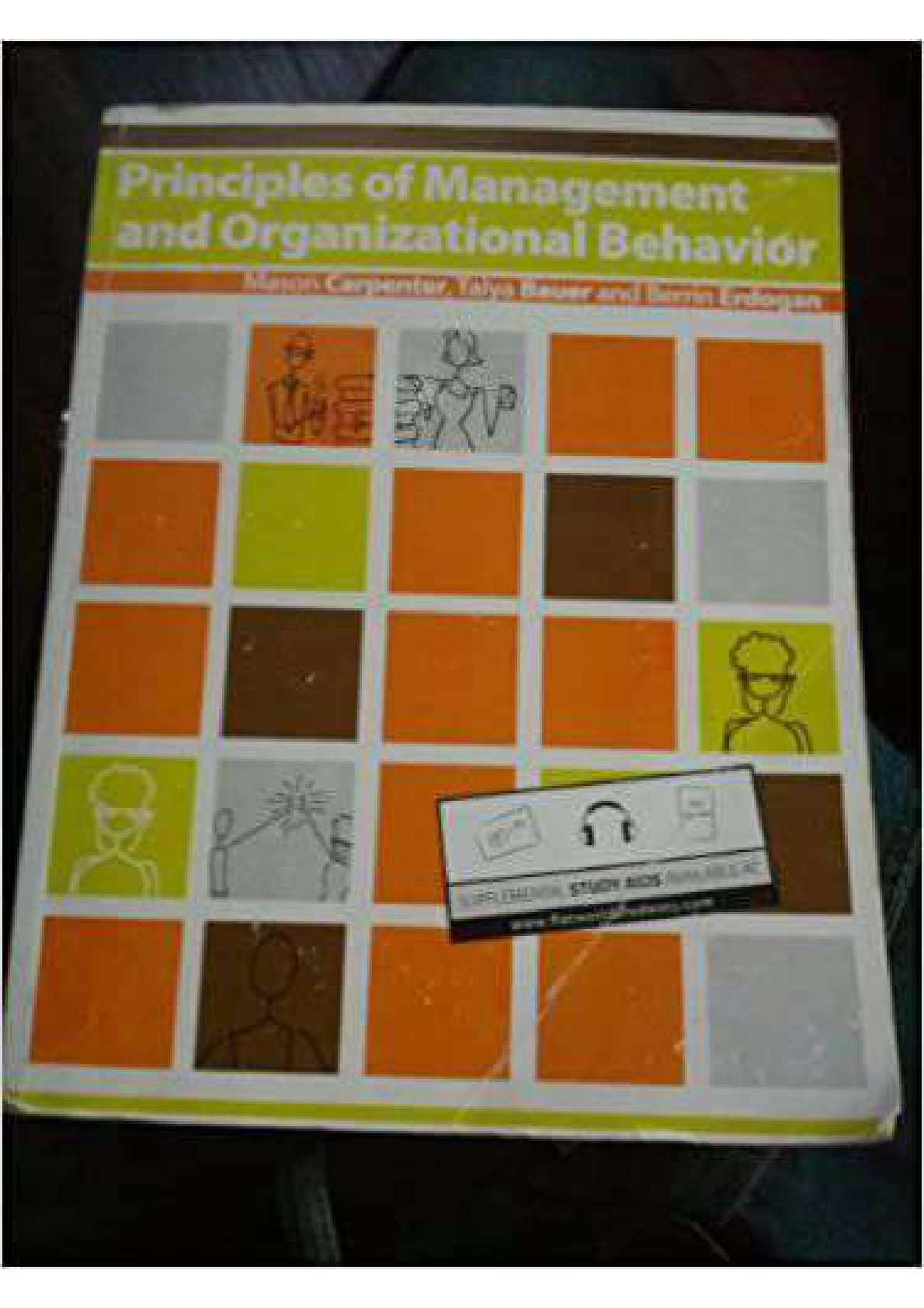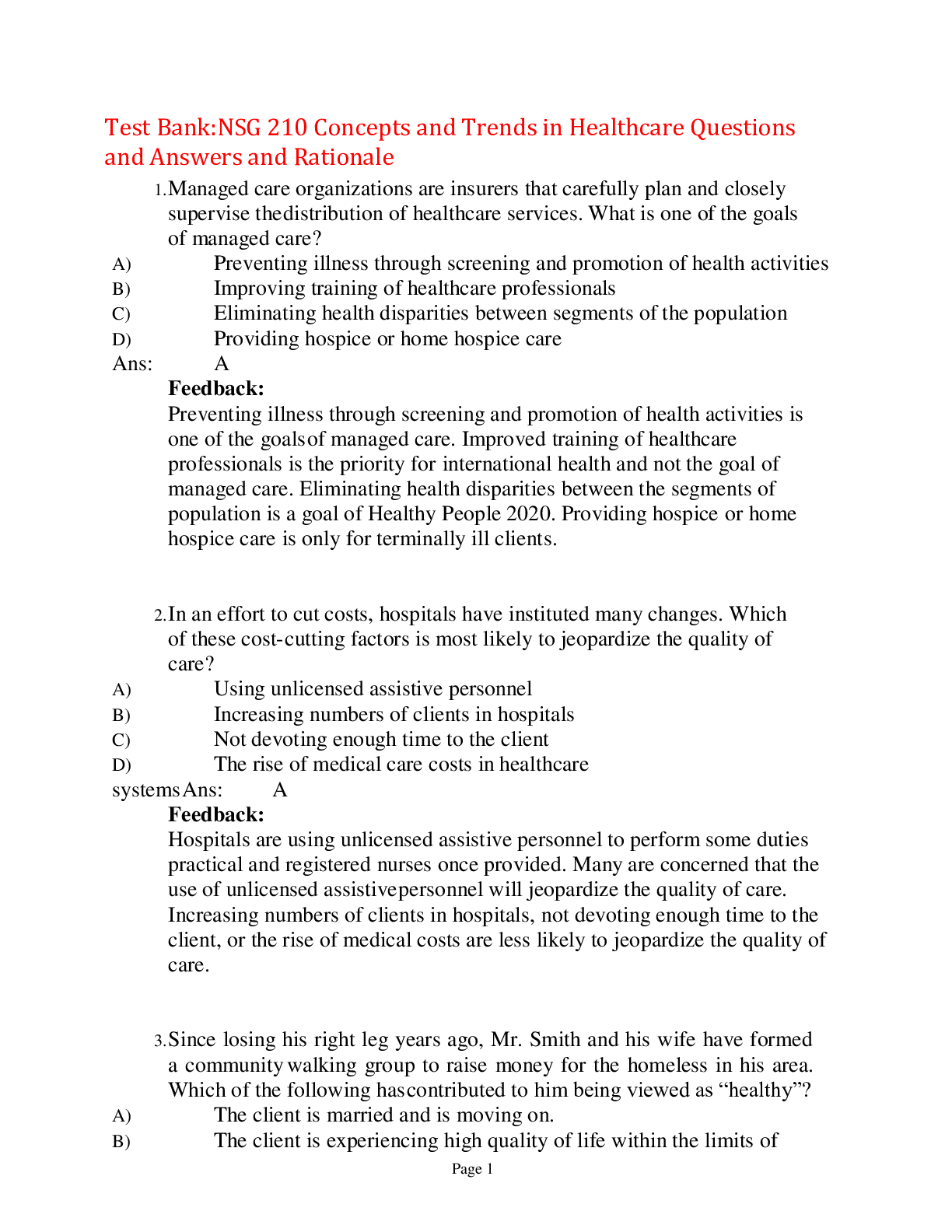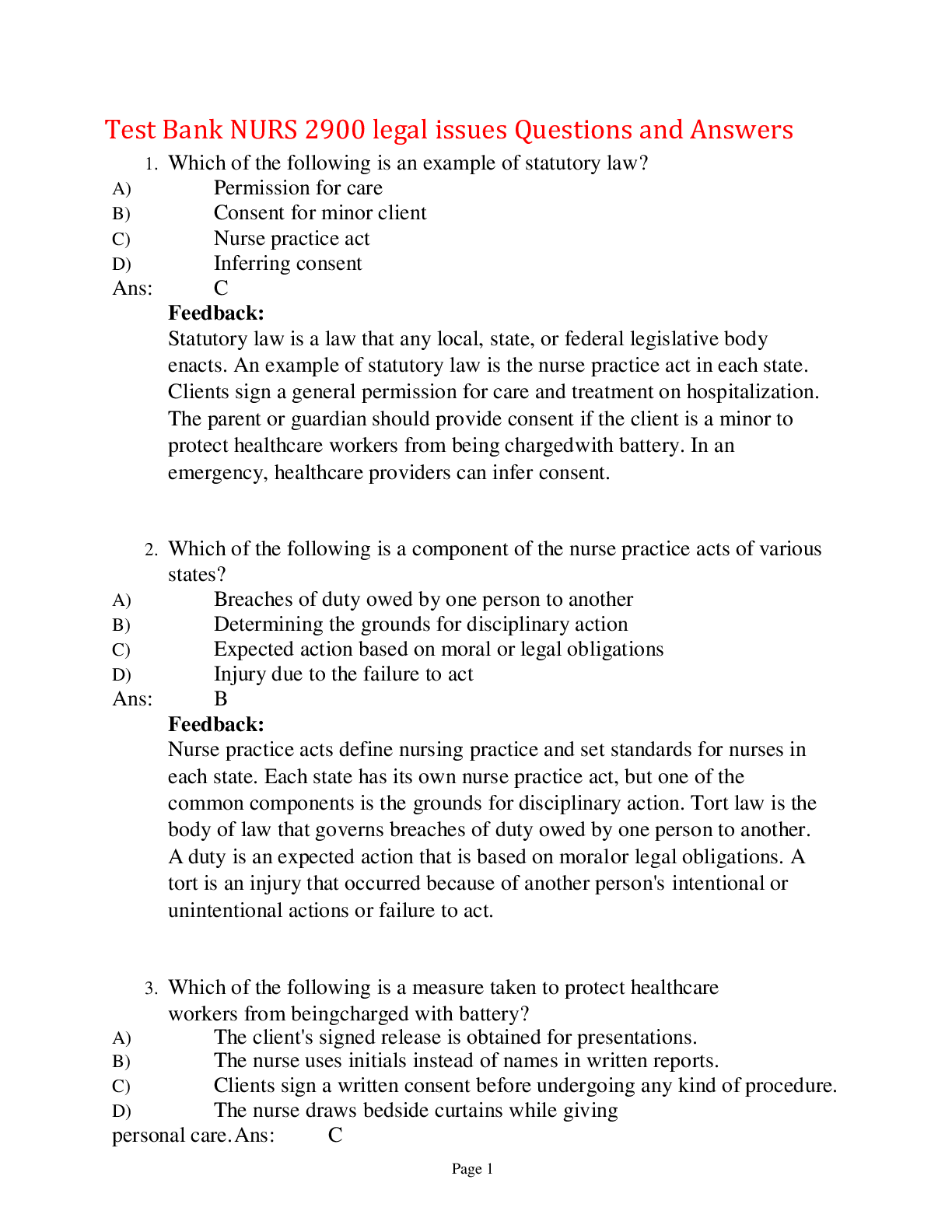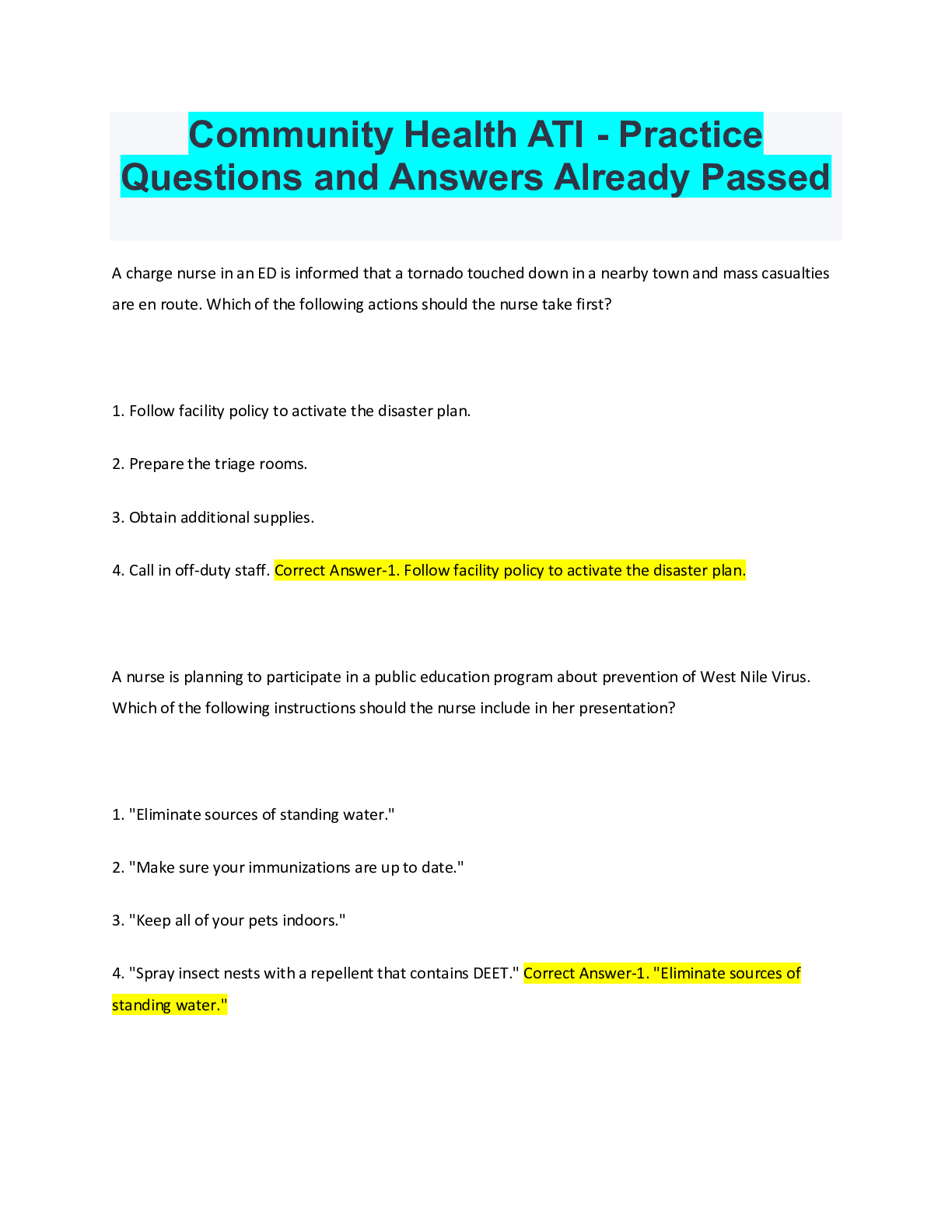Health Care > TEST BANK > NBME Practice Questions And Answers Latest (All)
NBME Practice Questions And Answers Latest
Document Content and Description Below
1. A 70-year-old woman has had increasing abdominal pain over the past 2 days. She has renal failure and has been receiving peritoneal dialysis for 18 months; her last treatment was 2 hours ago. She... appears toxic. Her temperature is 39 C (102.2 F), and blood pressure is 140/90 mm Hg. Her abdomen is distended and diffusely tender to deep palpation with rebound tenderness. Leukocyte count is 18,000/mm3. Which of the following is the most appropriate next step? A ) X-ray films of the abdomen B ) Comparison of abdominal fluid amylase with serum amylase activity C ) Gram's stain of abdominal fluid D ) Ultrasonography of the abdomen E ) CT scan of the abdomen and pelvis 2. A 5-year-old girl is brought to the physician because of temperatures to 40 C (104 F), tachypnea, and a nonproductive cough for 12 hours. Four days ago she was treated with an oral antibiotic for suspected pneumococcal pneumonia. Examination shows diminished breath sounds over the lower right lung fields and dullness to percussion at the right costophrenic angle. Which of the following is the most likely diagnosis? A ) Bronchopleural fistula B ) Empyema C ) Lung abscess D ) Pleurodynia E ) Pneumothorax 3. A 40-year-old man is brought to the emergency department 1 hour after a high-speed motor vehicle collision. On arrival, he is awake and alert but has severe pain over the sternum. His systolic blood pressure is 80 mm Hg, pulse is 80/min, and respirations are 10/min. An ECG shows multifocal premature ventricular contractions but no ST-segment changes. His PO2 is 100 mm Hg. After 1 L of lactated Ringer's solution is administered, his PO2 decreases to 60 mm Hg while breathing 4 L/min of oxygen by nasal cannula. Pulmonary capillary wedge pressure has increased from 14 mm Hg to 24 mm Hg (N=1–10). Which of the following is the most likely explanation for the patient's poor response to fluid resuscitation? A ) Inadequate administration of fluids B ) Myocardial contusion C ) Myocardial infarction D ) Pulmonary contusion E ) Traumatic rupture of the aorta 4. A 21-year-old African American college student has had increasing fatigue over the past 3 weeks. Since an episode of cystitis treated with trimethoprim-sulfamethoxazole 3 weeks ago, he has been unable to keep up with his physical education classes. For 6 months, he has been following a vegetarian diet that has been supervised by student health services. Examination shows no abnormalities. His hemoglobin level is 10 g/dL, mean corpuscular volume is 85 μm3, and reticulocyte count is 15%. Which of the following is the most likely cause of anemia in this patient? A ) Anemia secondary to infection NBME Practice Questions And Answers 2022 Test Bank Latest B ) Antibiotic therapy C ) Gastrointestinal blood loss D ) Sickle cell disease E ) Vegetarian diet 5. An 87-year-old nursing home resident with dementia, Alzheimer's type, is admitted to the hospital because of progressive lethargy and decreased appetite for 3 days. She had a flu-like illness followed by a deep cough 1 week ago. Over the past 10 months, she has been hospitalized once for bacterial pneumonia. She is responsive only to painful stimuli. Her temperature is 38.6 C (101.5 F), blood pressure is 110/60 mm Hg, pulse is 123/min and regular, and respirations are 28/min. Examination shows dry mucous membranes. There is no adenopathy. Crackles are heard in the right lung base. An x-ray film of the chest shows an infiltrate at the right lung base. The remainder of the examination shows no abnormalities. Which of the following is the most likely predisposing factor for this patient's pneumonia? A ) Decreased airway elasticity B ) Decreased baroreflex C ) Decreased gag reflex D ) Decreased thyroid function E ) Diastolic cardiac dysfunction F ) Impaired cardiac response to exercise G ) Impaired T-lymphocyte function H ) Impaired thirst I ) Increased lung compliance J ) Renal salt wasting 6. A 27-year-old woman comes to the physician because of feelings of anxiety about attending her 10-year high school reunion. She has a 2-year history of profound anxiety, palpitations, and sweating associated with an uneasiness around people; she avoids family gatherings and visiting friends because she is afraid of being embarrassed. She acknowledges that this fear is unreasonable. She does not use illicit drugs but says that alcohol makes her more comfortable around people. Her blood pressure is 130/90 mm Hg, and pulse is 88/min. On physical examination, she appears healthy and well nourished. Occasional wheezing is heard over the left lung field. The remainder of the examination shows no abnormalities. On mental status examination, she appears worried. Her leukocyte count is 9000/mm3 with a normal differential. Which of the following is the most likely diagnosis? A ) Alcohol abuse B ) Anxiety disorder due to a general medical condition C ) Asthma D ) Generalized anxiety disorder E ) Panic disorder with agoraphobia F ) Social phobia The response options for the next two items are the same. You will be required to select one answer for each item in the set. For each patient with urinary incontinence, select the most likely cause. A ) Detrusor instability B ) Interstitial cystitis C ) Overflow incontinence D ) Stress incontinence E ) Urethra diverticulum F ) Urinary fistula 7. A previously healthy 44-year-old woman, gravida 4, para 4, comes to the physician because of a 9-month history of progressive loss of small amounts of urine while running; she now has to wear an absorbent pad. Examination shows a second-degree cystourethrocele. For each patient with urinary incontinence, select the most likely cause. A ) Detrusor instability B ) Interstitial cystitis C ) Overflow incontinence D ) Stress incontinence E ) Urethra diverticulum F ) Urinary fistula 8. One day after an uncomplicated spontaneous vaginal delivery, a 23-year-old woman, gravida 1, para 1, has the onset of loss of small amounts of urine. She received epidural anesthesia during labor and delivery. Examination shows an episiotomy without evidence of hematoma. She is voiding 50 to 75 mL of urine at a time. Postvoid residual volume is 300 mL. The response options for the next two items are the same. You will be required to select one answer for each item in the set. 9. An 82-year-old woman is brought to the physician by her granddaughter because of a 6-week history of increasing forgetfulness. She is a retired schoolteacher and lives independently. Her granddaughter is concerned because on several occasions she has left the stove on when she went to bed. During conversations with her granddaughter, she has difficulty remembering past events and seems unconcerned about her memory lapses. The patient describes trouble sleeping through the night and has had a decreased appetite resulting in a 4.5-kg (10-lb) weight loss over the past month. She has a history of similar symptoms 2 and 5 years ago that were successfully treated with medication. She appears unkempt and has poor personal hygiene. Her temperature is 37 C (98.6 F), blood pressure is 110/70 mm Hg, and pulse is 80/min and regular. Mental status examination shows psychomotor retardation, a flat affect, impaired ability to recall past events, and trouble repeating three numbers in sequence. She is unable to recall the names of recent presidents. Her serum urea nitrogen (BUN) level is 25 mg/dL, and serum creatinine level is 1.7 mg/dL. For each patient with cognitive impairment, select the most likely diagnosis. A ) Acute stress disorder B ) Dementia, Alzheimer's type C ) Dissociative amnesia D ) General paresis E ) Head trauma F ) Hepatolenticular degeneration (Wilson's disease) G ) HIV encephalitis H ) Huntington's disease I ) Major depressive disorder J ) Multi-infarct (vascular) dementia K ) Niacin deficiency L ) Normal-pressure hydrocephalus M ) Parkinson's disease N ) Pick's disease O ) Schizophrenia, catatonic type P ) Normal aging 10. A 42-year-old computer science professor is brought to the physician by her husband, who reports insidious changes in his wife's personality and behavior. He reports that she believes that aliens have been speaking to her and tampering with their heating and air-conditioning systems. He says that she was upset when she turned 40 years old, and her symptoms have developed since that time. She was adopted, and her family history is unknown. Physical examination shows vermicular movements of the tongue and bilateral writhing motions of the upper extremities. Mental status examination shows indifference to her condition and mild to moderate difficulty with memory and calculations. 11. A 5-month-old boy is brought for a follow-up examination. He was born at 37 weeks' gestation and has had persistent wheezing since shortly after birth despite treatment with nebulized and oral bronchodilators and oral corticosteroids. His diet consists of 32 ounces of iron-fortified cow's milkbased formula daily. He appears well nourished and happy. On examination, there is moderate relief of wheezing with extension of the ne [Show More]
Last updated: 1 year ago
Preview 1 out of 74 pages
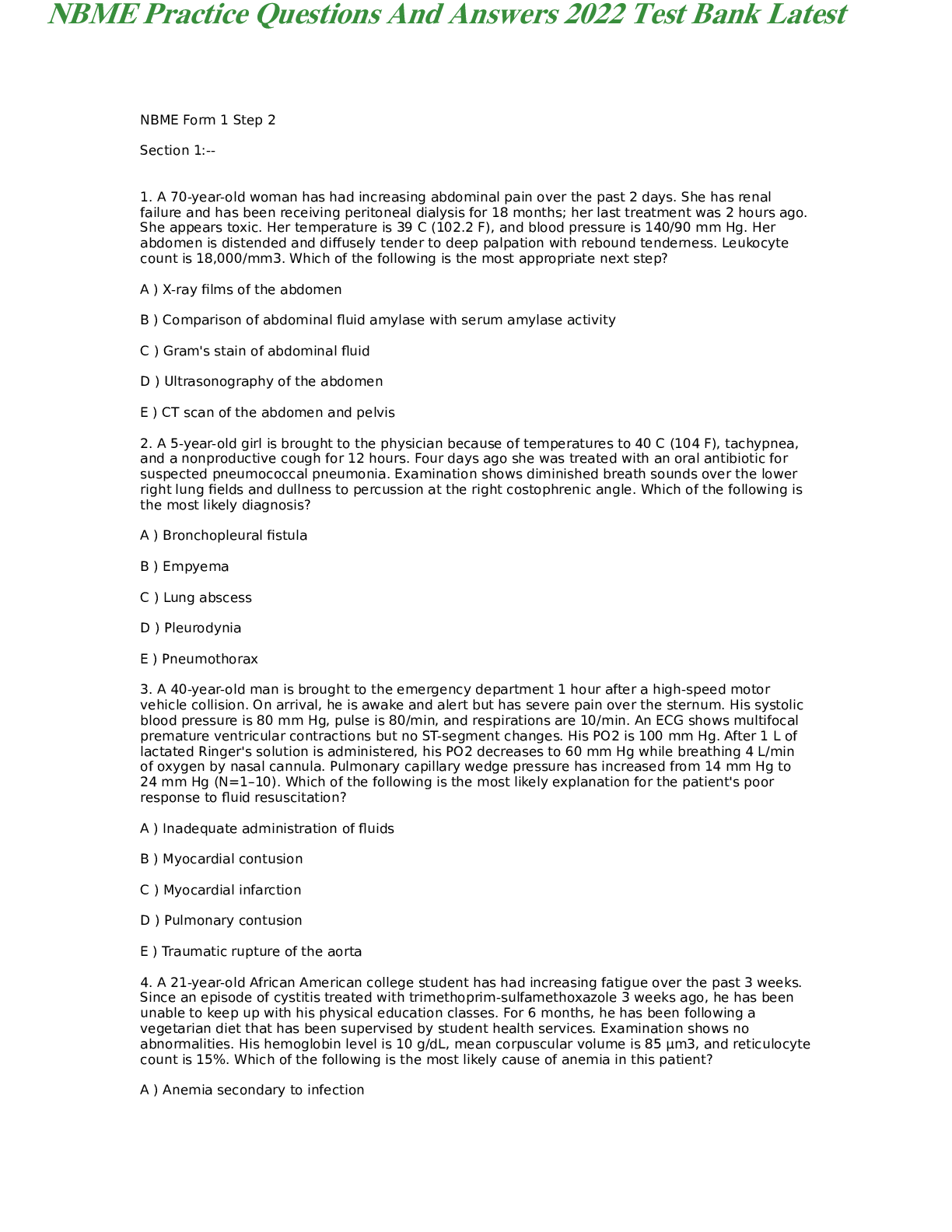
Reviews( 0 )
Document information
Connected school, study & course
About the document
Uploaded On
Aug 30, 2022
Number of pages
74
Written in
Additional information
This document has been written for:
Uploaded
Aug 30, 2022
Downloads
0
Views
50



.png)

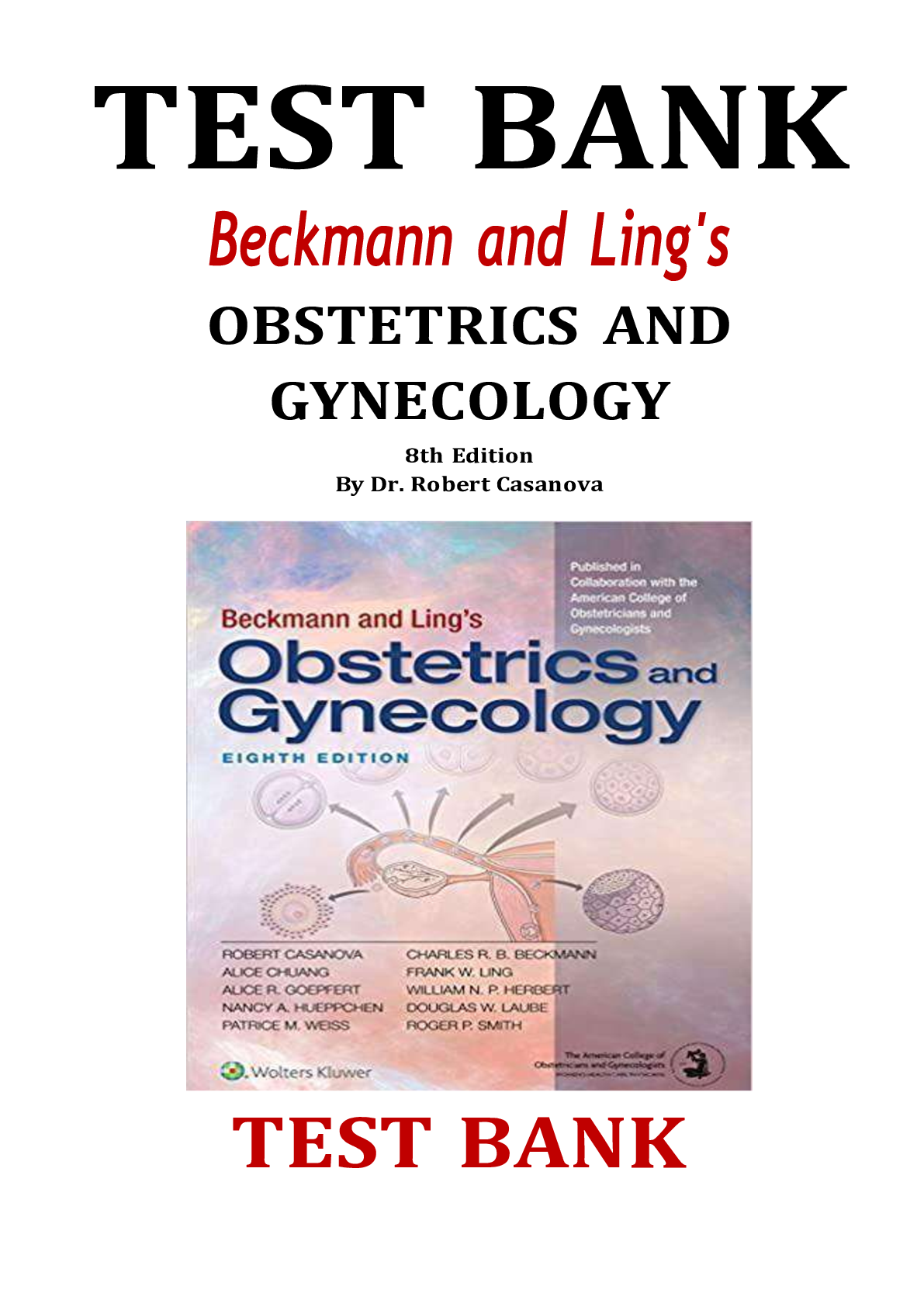



.png)



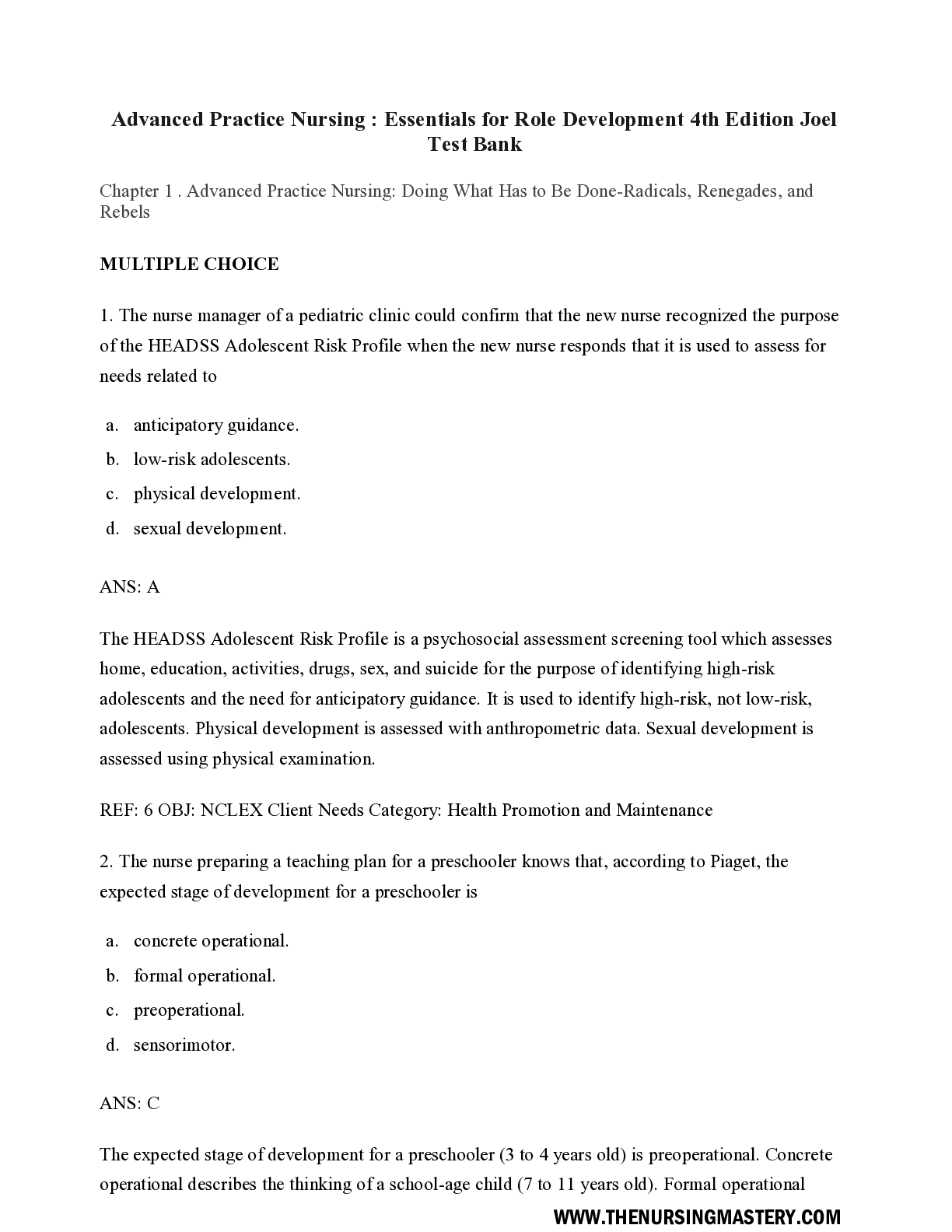


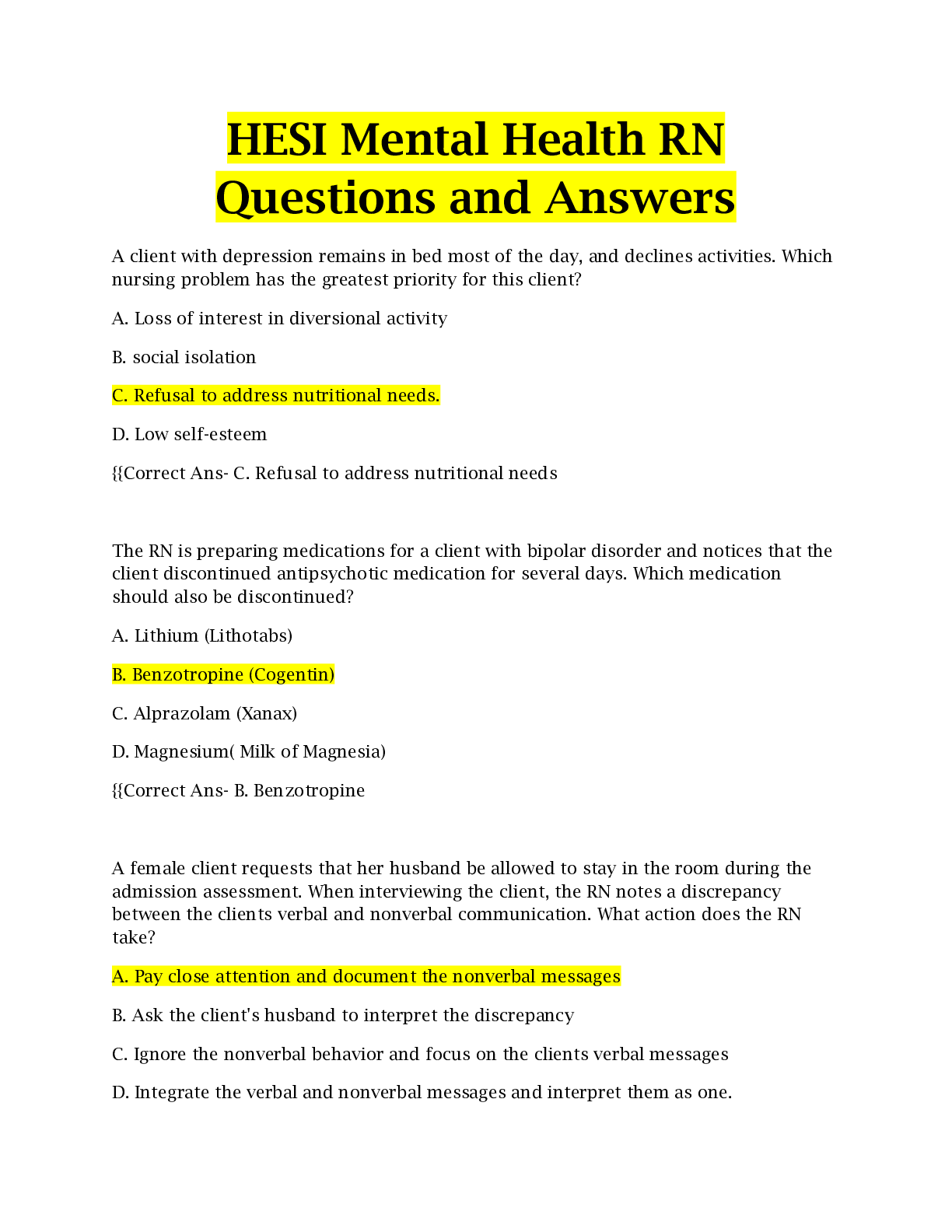


.png)
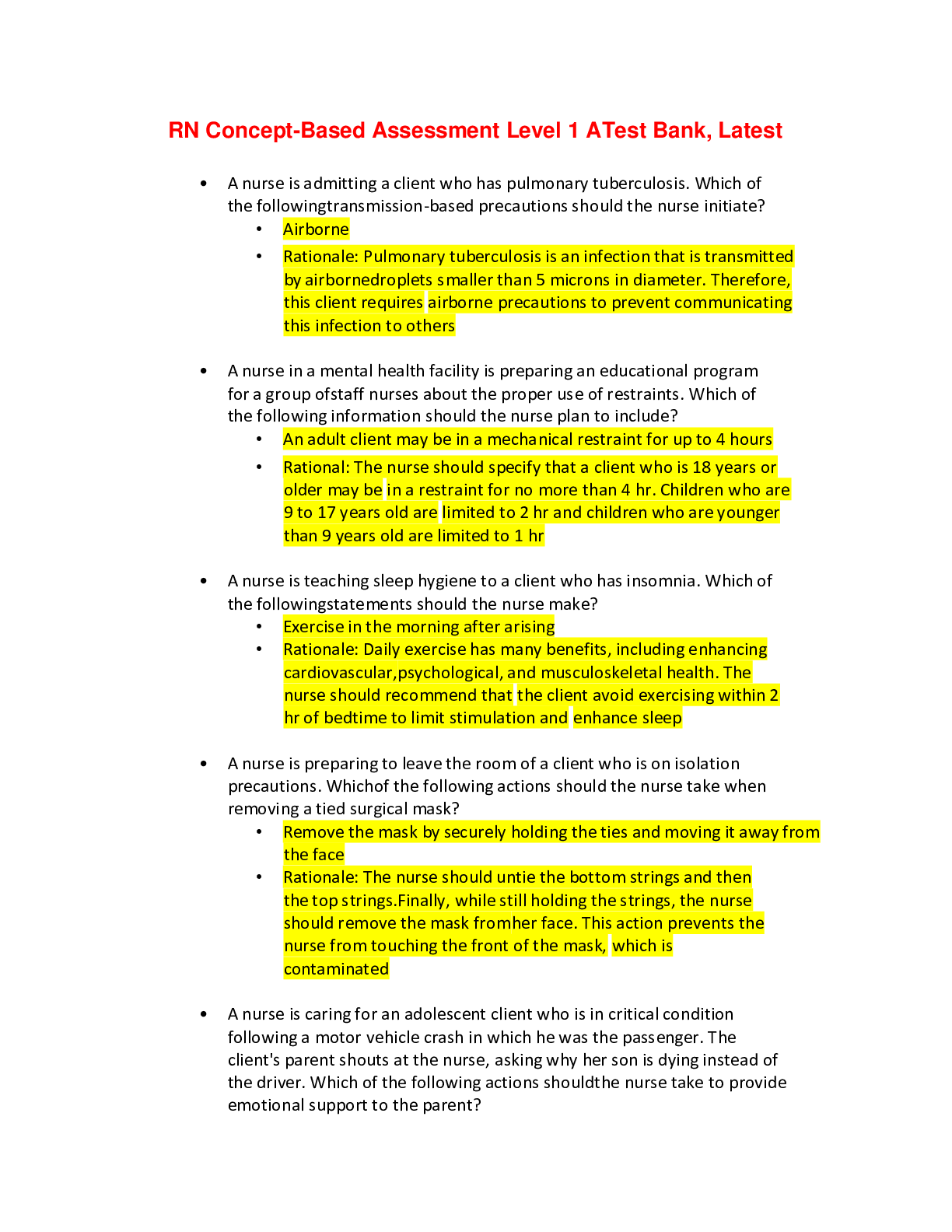
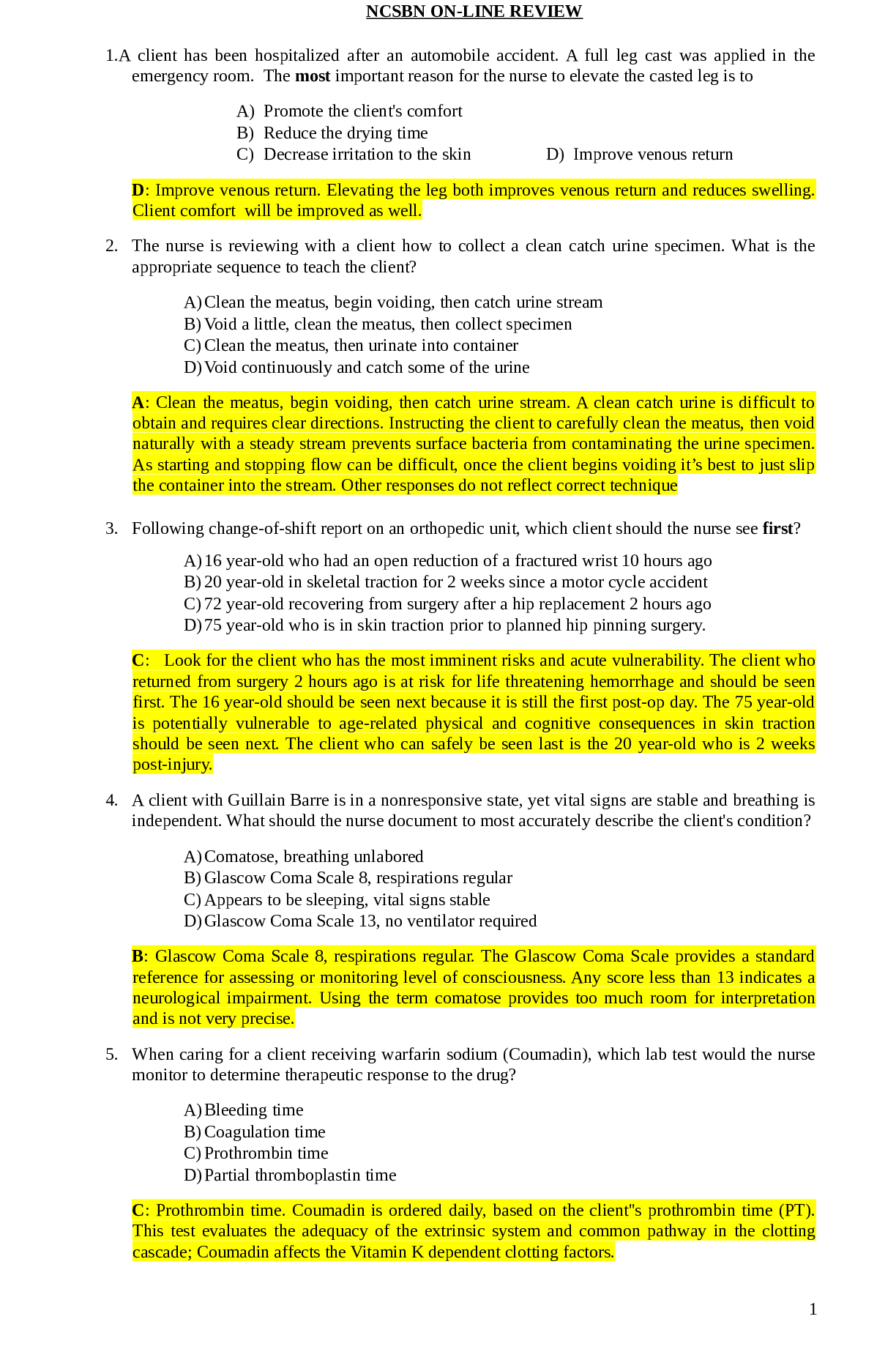


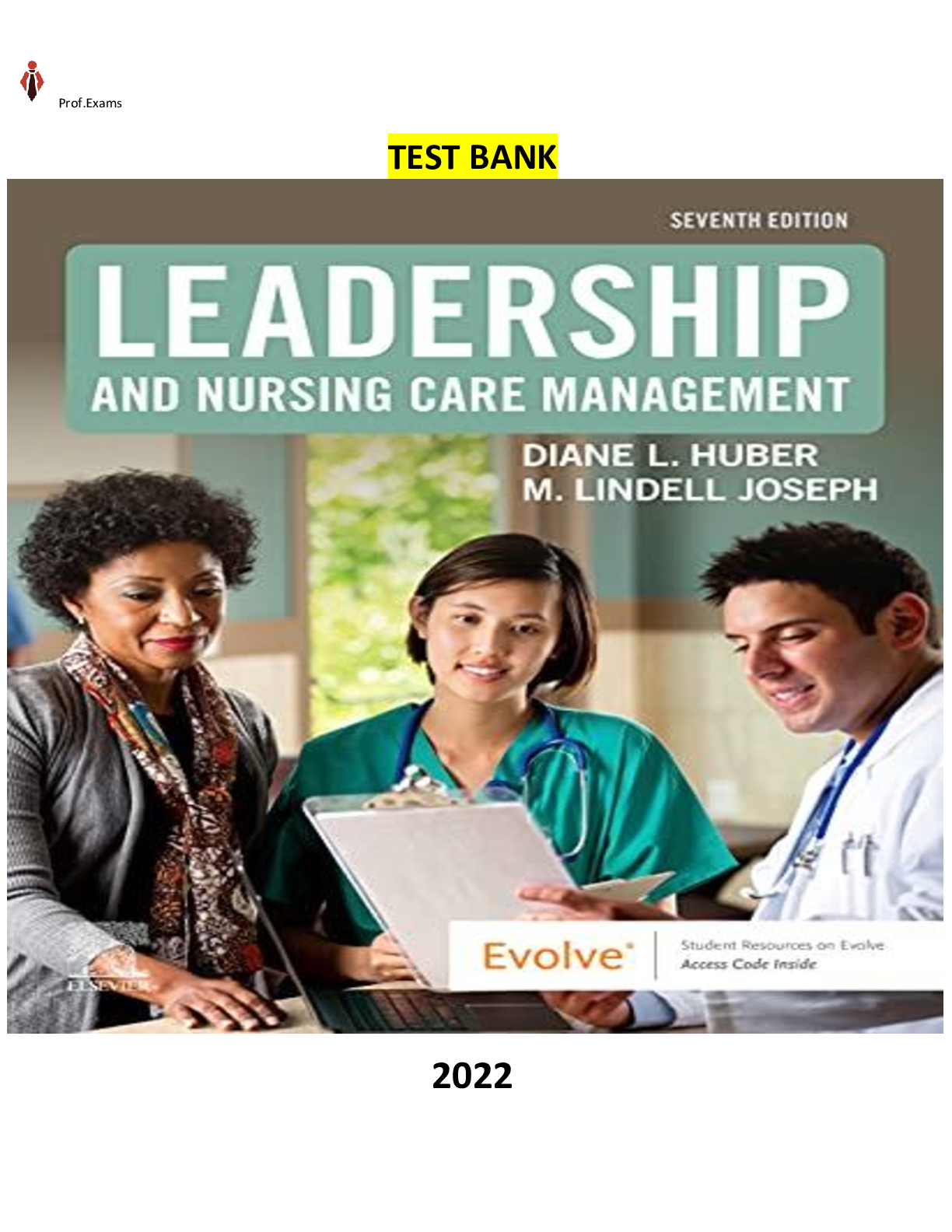
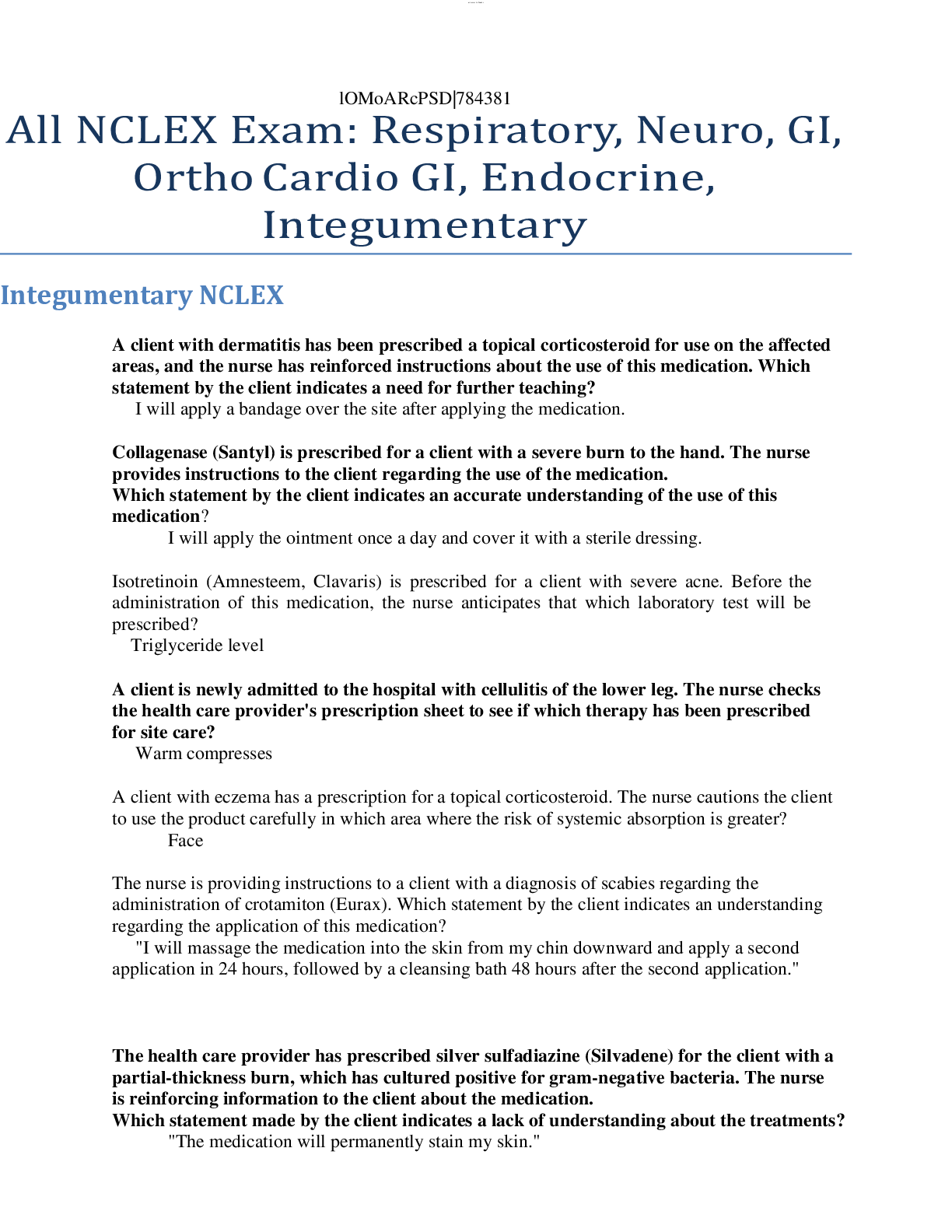
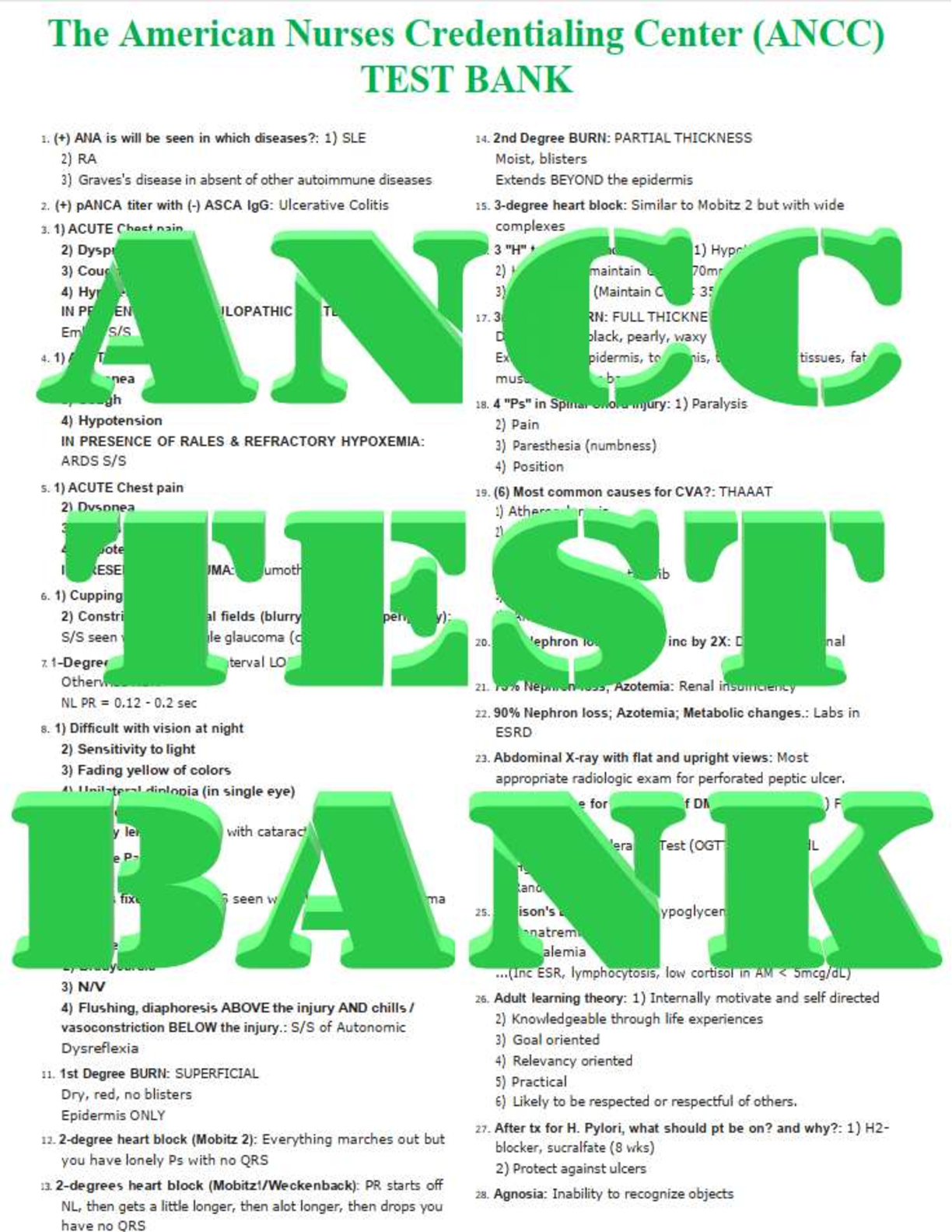
.png)
.png)


